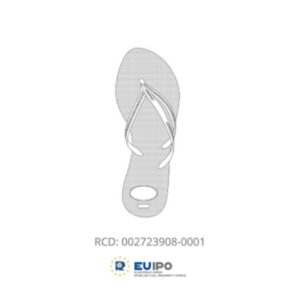In the realm of intellectual property, top-notch brand protection begins with a comprehensive understanding of trademark registration. Securing a distinctive trademark for your brand is crucial in establishing a strong presence in the marketplace, protecting your unique identity from imitation, and cultivating long-lasting customer trust. The process of trademark registration, however, can be fraught with complexities and nuanced requirements, which is where Trademarkroom’s expert guidance comes to the forefront.
For more than 15 years, the family-run business based in Southampton, England, Trademarkroom, has been diligently serving clients from various national and international regions, earning them a sterling reputation in the trademark field. Offering a wide array of services, from trademark registration to innovative solutions like the Trademark NFT/Blockchain service and the Trademark Watch Service, Trademarkroom is well-equipped to support your brand’s intellectual property requirements.
This article aims to elucidate the trademark registration process, offering a detailed examination of the essential steps and considerations involved. We will cover topics such as selecting a unique trademark, understanding the classification system, conducting comprehensive searches, and preparing the application.
Selecting and Assessing a Unique Trademark
The initial step in the trademark registration process involves creating a unique and distinctive mark that identifies and differentiates your products or services in the marketplace. A strong trademark enables customers to associate your brand with a specific level of quality, building credibility and loyalty. When selecting a trademark, consider the following criteria:
1. Distinctiveness: Your mark should be distinctive and capable of distinguishing your goods or services from those of competitors.
2. Non-Descriptive: Avoid generic or descriptive terms, which may be difficult to register and protect as they lack distinctiveness.
3. No Conflicting Trademarks: Ensure your chosen mark does not infringe on existing trademark rights of third parties to avoid potential legal disputes.
4. Universal Appeal: Consider the implications of your chosen trademark across multiple languages and cultures to avoid unintended consequences or negative connotations.
Trademarkroom’s team of experts can provide invaluable assistance in selecting a unique and memorable trademark, evaluating its potential for successful registration and protection.
Understanding the Classification System
To register a trademark, it is crucial to understand the International Classification of Goods and Services, also known as the Nice Classification. This system categorises goods and services into 45 distinct classes, with Classes 1-34 covering goods, and Classes 35-45 pertaining to services. Accurately determining the relevant classes is essential for ensuring comprehensive protection of your trademark across all areas of your business operations. Trademarkroom’s expertise in the classification process can help you identify the appropriate classes for your products or services, maximising your brand’s protection.
Conducting Comprehensive Trademark Searches
Before submitting a trademark application, it is essential to verify that your proposed mark is not in direct conflict with any existing registered trademarks. A comprehensive search for potential conflicts reduces the likelihood of encountering legal challenges or forced rebranding down the line.
Trademarkroom can conduct thorough searches of national and international trademark databases, using advanced search techniques to identify phonetically and visually similar marks as well as exact matches. These specialists can also identify potential issues within your industry and provide strategic guidance on how to address them.
Preparing and Filing the Trademark Application
Once the prerequisite steps have been completed, it is time to prepare and submit the trademark application to the relevant authorities. This stage involves providing essential details about your brand, such as:
1. Applicant Information: Details about the individual or entity applying for trademark registration, including name, address, and legal entity type.
2. Trademark Representation: A clear and accurate representation of the mark you wish to register, including design, logo, or textual elements.
3. Goods and Services: A detailed specification of the goods or services that your mark will protect, classified according to the Nice Classification system.
4. Declaration of Use or Intent to Use: Some jurisdictions require a declaration stating that the applicant is currently using the mark in commerce or has a bona fide intent to use it in the future.
Trademarkroom’s experienced professionals can help you accurately complete and submit your application, minimising inaccuracies or omissions that could lead to delays or objections.
Responding to Office Actions and Maximising Registration Success
Once the application is filed, it will undergo examination by the relevant trademark office. In some instances, you may receive an office action, requiring additional clarifications, amendments, or information to proceed with the registration process. Trademarkroom can expertly navigate these issues, helping you address potential concerns and enhance your chances of registration success.
Conclusion
Embarking on the trademark registration process can be a complex and daunting journey. However, with the expertise and support of Trademarkroom, your business can anticipate a streamlined, efficient experience, resulting in a successful and enforceable trademark registration that secures your brand’s identity and bolsters your presence in the market.
By partnering with Trademarkroom, you can trust in the knowledge that your intellectual property is in capable hands. Their commitment to delivering excellence and superior client satisfaction ensures that your journey towards trademark registration will be meticulously managed every step of the way.











